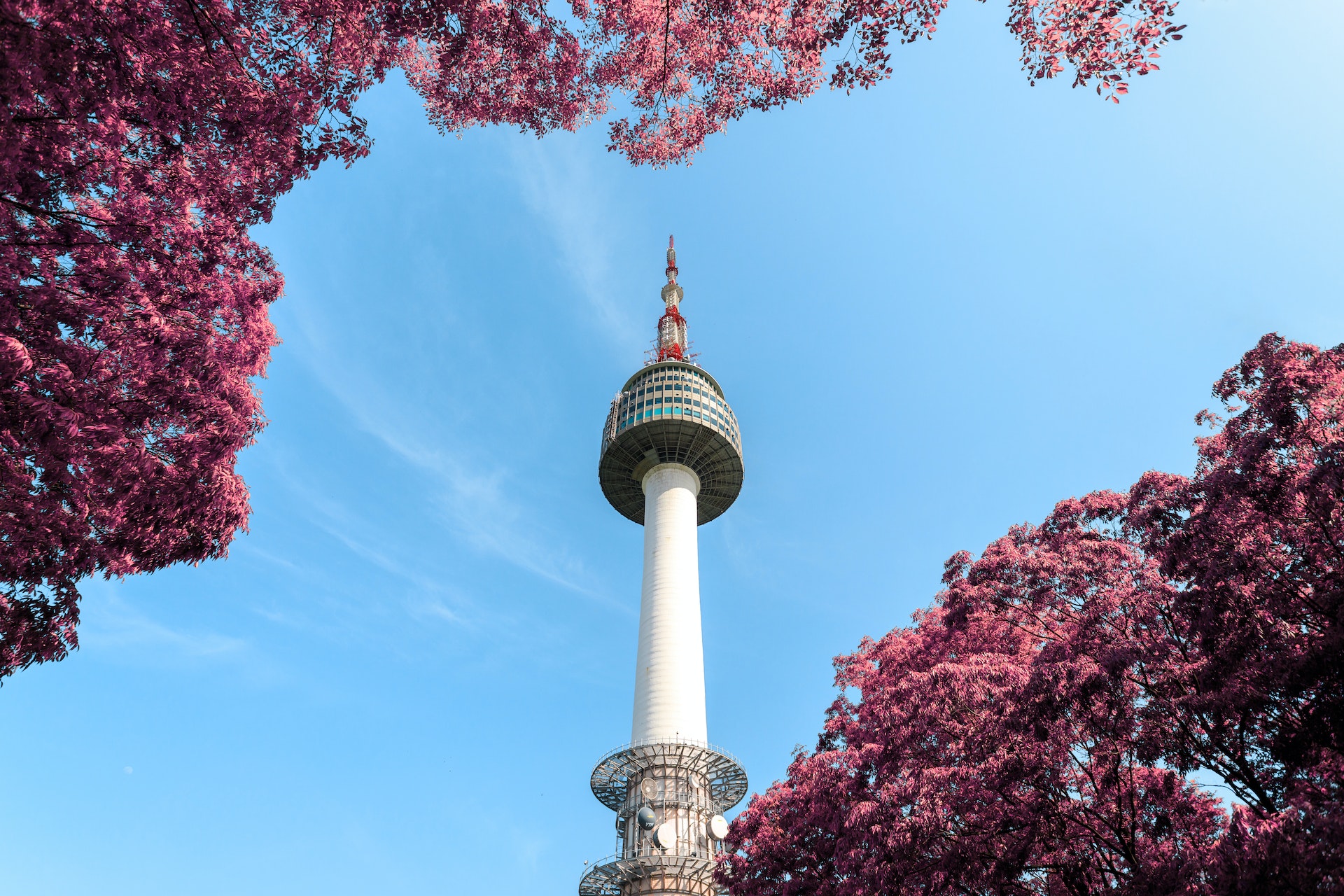10 best place to visit in Seoul Korea
There are many amazing places to visit in Seoul, the capital city of South Korea. Here are some of the top-rated tourist attractions that you might want to check out:
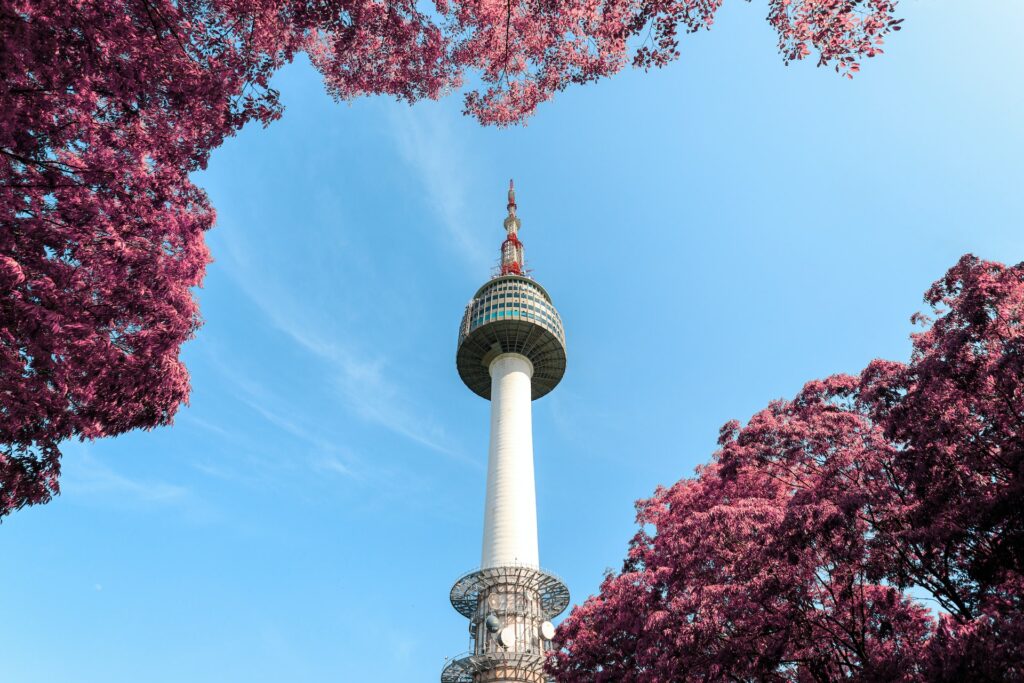
1. N Seoul Tower: 10 best place to visit in Seoul
N Seoul Tower, also known as Namsan Tower or Seoul Tower, is an iconic observation tower located on Namsan Mountain in central Seoul, South Korea. Built in 1971 as a broadcasting tower, it has become a popular tourist attraction offering panoramic views of the city.
The tower stands at 236 meters (774 feet) above sea level and features a unique blend of modern and traditional Korean architectural elements. It houses facilities such as restaurants, cafes, shops, and an observatory.
The observatory, situated at the top, provides visitors with breathtaking 360-degree views of Seoul’s skyline, mountains, and the Han River. Indoor and outdoor viewing areas allow for memorable photographs.
N Seoul Tower is famous for its “Locks of Love” tradition. Couples attach padlocks to fences and designated areas, symbolizing their everlasting love. This romantic tradition has made the tower a popular destination for couples.
At night, the tower is illuminated, creating a captivating display visible from different parts of the city. The lighting changes with seasons and events, enhancing the tower’s appeal. It participates in various festivals and events, featuring colorful light shows and decorations.
To reach the tower, visitors can take a cable car or hike up Namsan Mountain. Shuttle buses are also available for transportation. The surrounding area includes Namsan Park, offering scenic walking trails and a chance to enjoy nature.
N Seoul Tower, an emblematic symbol of Seoul, offers visitors an opportunity to appreciate the city’s beauty from a remarkable vantage point. With its stunning views, romantic atmosphere, and cultural significance, the tower remains a must-visit destination for both locals and tourists alike.
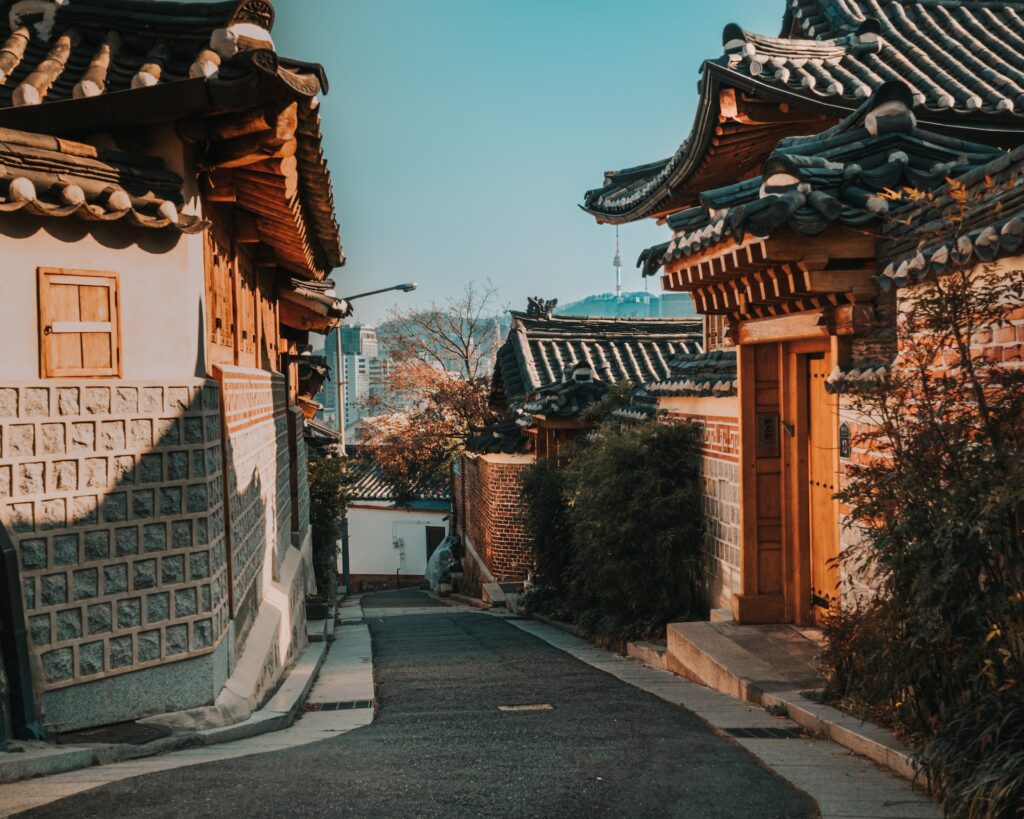
2. Bukchon Hanok Village: 10 best place to visit in Seoul
Bukchon Hanok Village is a traditional Korean village located in Seoul, South Korea. It is known for its well-preserved hanok houses from the Joseon Dynasty era. Situated between Gyeongbokgung and Changdeokgung palaces, the village offers a glimpse into traditional Korean architecture and culture.
Key points about Bukchon Hanok Village:
- Location: The village occupies the neighborhoods of Bukchon-ro, Gahoe-dong, and Samcheong-dong, nestled between two prominent palaces in Seoul.
- Hanok Houses: The village showcases traditional hanok houses made of natural materials like wood, clay, and stone. These houses feature sloping roofs, wooden pillars, and courtyards. Many hanok houses are repurposed as cultural centers, guesthouses, museums, and teahouses.
- Cultural Experience: Visitors can participate in cultural activities such as tea ceremonies, calligraphy classes, traditional crafts, and hanbok rentals, offering an immersive experience of Korean traditions.
- Art and Museums: Bukchon Hanok Village is home to art galleries and museums exhibiting traditional and contemporary Korean art, including paintings, ceramics, and more.
- Scenic Walks: Visitors can enjoy picturesque walks through charming alleys, capturing the essence of the village’s traditional architecture. The elevated location provides panoramic views of the cityscape.
- Preservation: The village has undergone restoration efforts to preserve its historical charm. Strict regulations are in place to protect the traditional architecture and cultural significance of the village.
- Visitor Tips: To avoid crowds, it’s advisable to visit on weekdays or early mornings. Information centers and maps are available to assist visitors in navigating the village.
Bukchon Hanok Village is a captivating destination that offers a window into traditional Korean culture and architecture. With its well-preserved hanok houses, cultural experiences, and scenic walks, the village invites visitors to experience the rich heritage of Korea’s past.
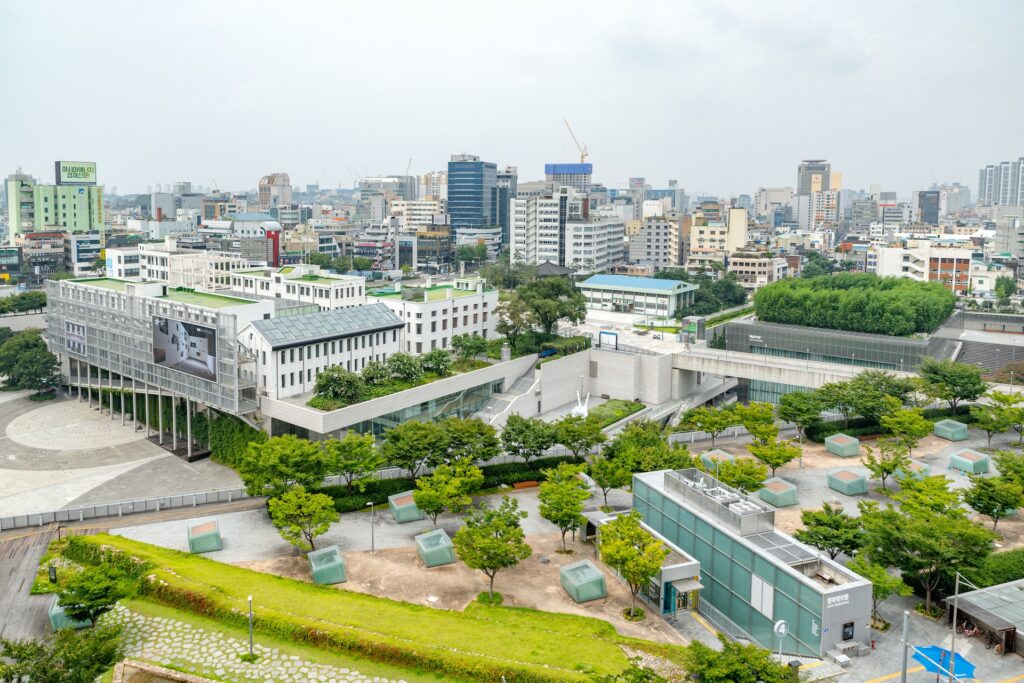
3. National Museum of Korea: 10 best place to visit in Seoul
The National Museum of Korea, located in Seoul, is the largest and most comprehensive museum in South Korea. It serves as a cultural and educational institution dedicated to preserving and displaying the nation’s rich history and cultural heritage.
Key points about the National Museum of Korea:
- Location and Size: Situated in Yongsan District, the museum occupies a vast area and boasts an impressive architectural design. Its proximity to Yongsan Family Park adds to its appeal.
- Collections: The museum houses a vast collection of artifacts, artworks, and archaeological findings spanning thousands of years of Korean history. The collection encompasses various fields such as archaeology, history, art, and cultural heritage.
- Exhibitions: The museum showcases its collections through permanent and special exhibitions. Permanent exhibitions include displays of ancient artifacts, historical relics, traditional crafts, and fine art pieces. Special exhibitions are organized periodically, featuring diverse themes and collaborations with international institutions.
- Cultural Heritage: The National Museum of Korea plays a crucial role in preserving and promoting Korea’s cultural heritage. It houses and displays national treasures, including royal artifacts, Buddhist art, and traditional craftsmanship, providing insights into the country’s rich cultural legacy.
- Educational Programs: The museum offers educational programs for visitors of all ages. These programs include guided tours, workshops, lectures, and interactive activities, allowing visitors to engage more deeply with the exhibits and gain a better understanding of Korean history and culture.
- Facilities: The museum provides various amenities for visitors, including a library, auditoriums, a museum shop, and multiple dining options. The outdoor space features sculptures and gardens, providing a pleasant environment for leisure and relaxation.
- Research and Conservation: The National Museum of Korea conducts research and conservation activities to preserve and study the artifacts in its collection. It collaborates with domestic and international institutions to advance knowledge and contribute to academic discourse.
The National Museum of Korea stands as a cultural institution of national importance, showcasing the beauty, history, and heritage of Korea. With its extensive collection, diverse exhibitions, educational programs, and commitment to research, the museum offers an enriching experience for visitors interested in Korean culture and history.
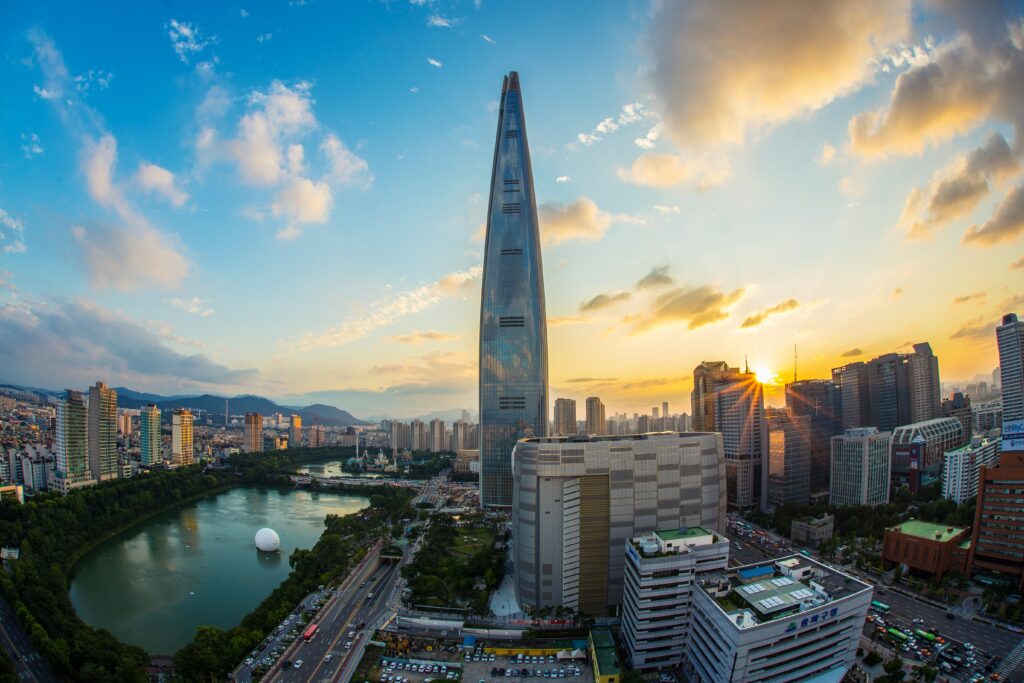
4. Lotte World Tower: 10 best place to visit in Seoul
Lotte World Tower is a renowned skyscraper located in Seoul, South Korea. It is one of the tallest buildings in the world and an iconic landmark in the city’s skyline.
Key points about Lotte World Tower:
- Height and Architecture: Standing at a towering height of 555 meters (1,821 feet), Lotte World Tower is a symbol of modern architectural excellence. Its sleek and elegant design incorporates elements of traditional Korean art and culture.
- Mixed-Use Building: Lotte World Tower is a multi-purpose building that houses various facilities. It includes a luxury hotel, offices, residential units, a shopping mall, restaurants, and an observation deck.
- Observation Deck: The tower’s observation deck, called Seoul Sky, offers breathtaking panoramic views of Seoul. Situated on the upper floors, visitors can enjoy stunning vistas of the city’s skyline, mountains, and the Han River.
- Lotte World Mall: The tower is connected to Lotte World Mall, one of the largest shopping complexes in South Korea. The mall features a wide range of retail outlets, entertainment facilities, and dining options, providing a complete shopping and leisure experience.
- Skywalk: Lotte World Tower features a unique attraction known as the Skywalk. This transparent glass walkway is located on the 118th floor and offers a thrilling experience as visitors can look directly down to the ground beneath them.
- Cultural Significance: Lotte World Tower has become an important symbol of Seoul’s growth and development. It represents the city’s dynamic spirit and serves as a source of pride for Koreans.
- Architectural Accolades: The tower has received numerous awards for its architectural design and engineering excellence. Its innovative construction techniques and sustainable features have garnered international recognition.
Lotte World Tower stands as an impressive testament to Seoul’s modernity and ambition. With its stunning height, diverse facilities, and captivating views, it is a must-visit destination for tourists and a source of pride for locals.
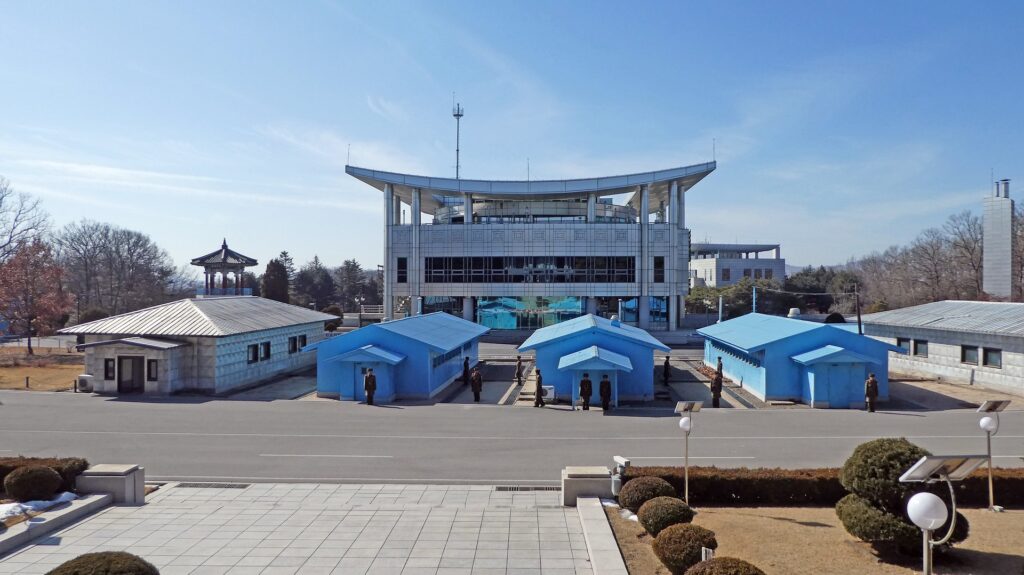
5. DMZ: 10 best place to visit in Seoul
The Demilitarized Zone (DMZ) in Korea is a strip of land that separates North Korea and South Korea. It is a highly significant and heavily fortified area, known for its historical and political significance.
Key points about the DMZ in Korea:
- Location and Size: The DMZ stretches approximately 250 kilometers (155 miles) across the Korean Peninsula, running from the east to the west coast. It is approximately 4 kilometers (2.5 miles) wide, creating a buffer zone between the two Koreas.
- Purpose and History: The DMZ was established as part of the Armistice Agreement signed in 1953, following the Korean War. Its purpose was to create a neutral area where military activities would be restricted, reducing tensions between the two countries.
- Military Presence: Despite its name, the DMZ is one of the most heavily militarized areas in the world. Both North and South Korea maintain a significant military presence along the border, with troops, guard posts, and landmines.
- Joint Security Area (JSA): Within the DMZ, the Joint Security Area is a small section where both North and South Korean forces stand face-to-face. It is a site of occasional high-level diplomatic meetings and symbolic gestures.
- Ecological Importance: Due to limited human presence and military activity, the DMZ has become an unintended ecological haven. It is home to diverse flora and fauna, including endangered species. Efforts are underway to preserve and study this unique ecosystem.
- Tourist Attraction: The DMZ has become a popular tourist destination, attracting visitors from around the world. Visitors can take guided tours to explore designated areas, learn about the history and current situation, and experience the tension and significance of the border.
- Symbolism and Hope: The DMZ serves as a powerful symbol of the divided Korean Peninsula and the hopes for reunification. It represents the complex relationship between the two countries and the desire for peace and reconciliation.
The DMZ in Korea is a place of historical, political, and ecological significance. It symbolizes the division between North and South Korea while holding the potential for future reconciliation. As a tourist destination, it offers visitors a glimpse into the complex dynamics of the Korean Peninsula and the aspirations for peace and unity.
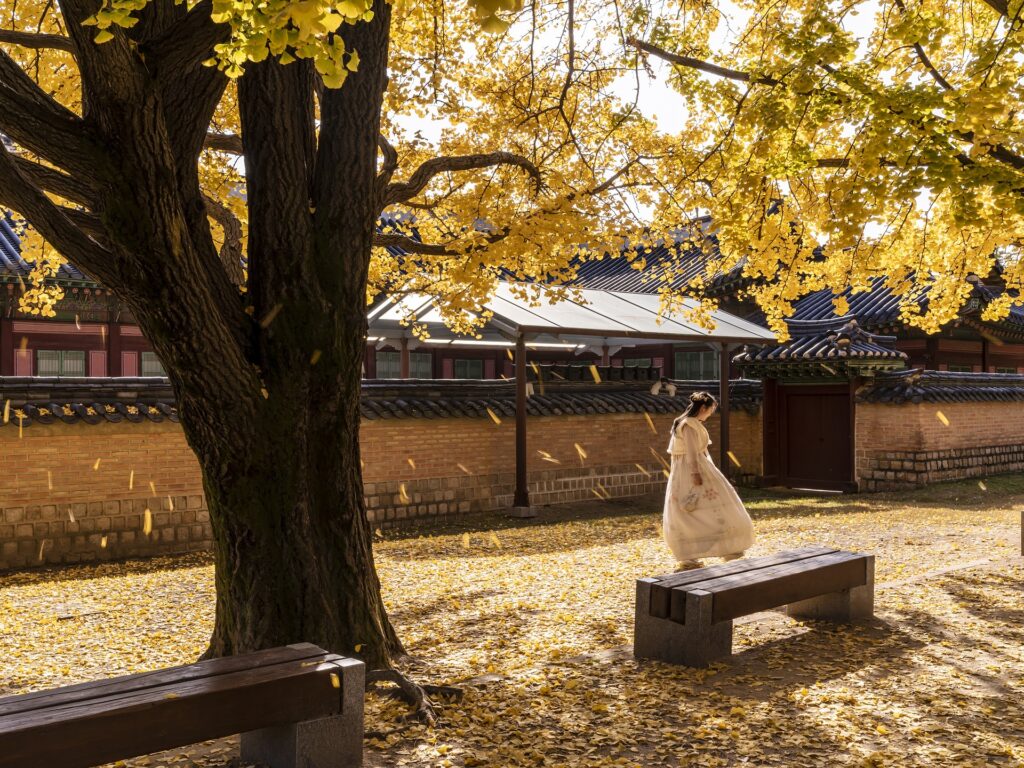
6. Gyeongbokgung Palace: 10 best place to visit in Seoul
Gyeongbokgung Palace, located in Seoul, South Korea, is a grand and iconic royal palace that holds deep historical and cultural significance. As the largest palace in the country, it showcases traditional Korean architecture and serves as a symbol of the Joseon Dynasty.
Key points about Gyeongbokgung Palace:
- Historical Significance: Gyeongbokgung Palace was built in 1395 and served as the main royal palace during the Joseon Dynasty. It was the center of political and administrative activities and witnessed key moments in Korean history.
- Architecture: The palace complex features magnificent structures with intricate details. Highlights include Geunjeongjeon (Throne Hall), Gyeonghoeru (Royal Banquet Hall), and the beautiful Gyeonghoeru Pavilion, which stands on an artificial island surrounded by a serene pond.
- Changing of the Guard Ceremony: Visitors can witness the traditional Changing of the Guard Ceremony, a colorful and ceremonial reenactment of the royal guard’s shift change. The ceremony showcases the vibrant traditions and customs of the past.
- National Palace Museum: Within the palace grounds, the National Palace Museum offers insights into Korean history and culture. It houses a vast collection of artifacts, including royal treasures, paintings, and archaeological relics.
- Royal Court Culture: Gyeongbokgung Palace provides an immersive experience into the royal court culture of the Joseon Dynasty. Visitors can explore the various palace buildings, visit the royal residences, and learn about the lifestyles and customs of the royal family and courtiers.
- Surrounding Gardens: The palace is surrounded by beautiful gardens and pavilions, such as Hyangwonjeong Pavilion and the tranquil Gyeonghoeru Pond. These areas provide peaceful retreats and picturesque spots for visitors to enjoy nature and architectural beauty.
- Cultural Events: The palace hosts various cultural events throughout the year, including traditional music and dance performances, craft demonstrations, and festivals. These events offer opportunities to experience and appreciate Korean traditions firsthand.
Gyeongbokgung Palace stands as a testament to Korea’s rich cultural heritage and royal legacy. Its grandeur, architectural beauty, and historical significance make it a must-visit destination for tourists and locals alike. Exploring the palace complex and immersing oneself in its rich history provides a deeper understanding of Korea’s past and its enduring cultural traditions.
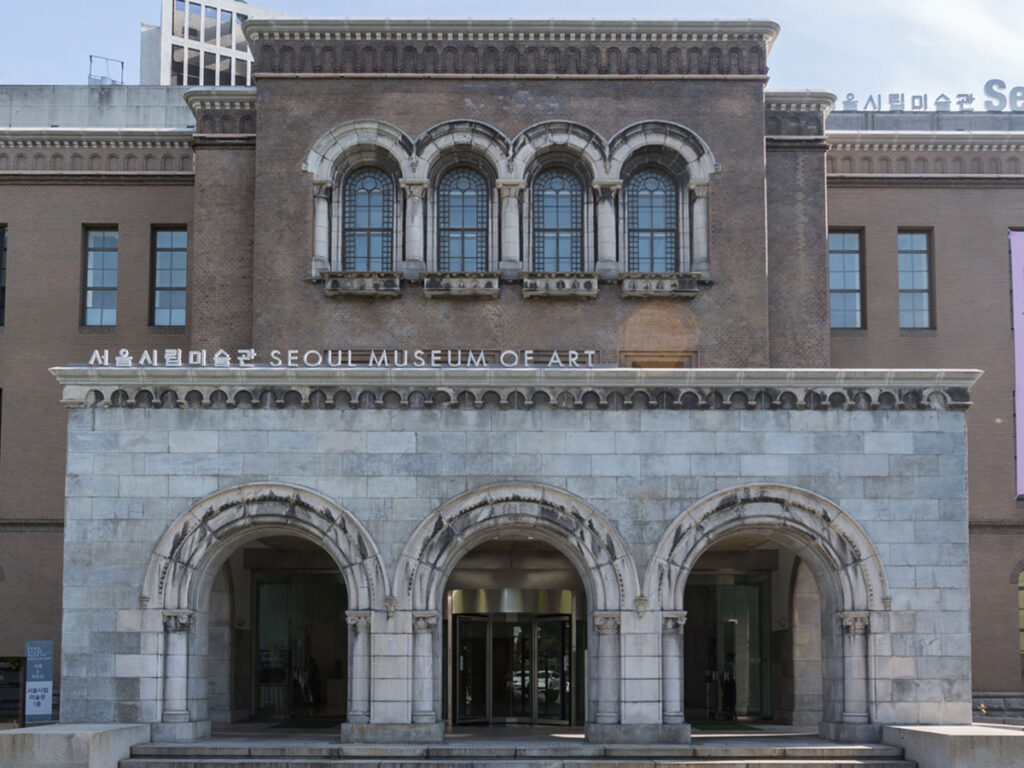
7. Seoul Museum of Art: 10 best place to visit in Seoul
The Seoul Museum of Art (SeMA) is a prominent cultural institution in Seoul, South Korea, dedicated to promoting contemporary art and fostering artistic appreciation among visitors. It serves as a vibrant hub for artistic expression, exhibitions, and educational programs.
Key points about the Seoul Museum of Art:
- Mission and Purpose: The Seoul Museum of Art aims to showcase contemporary art, nurture emerging artists, and provide a platform for cultural exchange. It plays a crucial role in preserving and promoting the cultural heritage of Seoul.
- Exhibitions: The museum hosts a diverse range of exhibitions featuring local and international contemporary artists. These exhibitions encompass various art forms, including paintings, sculptures, installations, multimedia, and performance art. They provide a glimpse into the evolving art scene and encourage dialogue and reflection.
- Collection: The museum maintains an extensive collection of artworks, including pieces by renowned Korean artists and works representing different artistic movements. The collection serves as a valuable resource for research, education, and public engagement.
- Educational Programs: The Seoul Museum of Art offers educational programs and workshops for individuals of all ages, encouraging active participation and fostering creativity. These programs aim to deepen the public’s understanding and appreciation of contemporary art.
- Community Engagement: The museum actively engages with the local community through various outreach initiatives. It collaborates with artists, cultural organizations, and community groups to create meaningful connections and promote art accessibility.
- Special Projects and Events: The Seoul Museum of Art organizes special projects, such as site-specific installations, thematic exhibitions, and interdisciplinary collaborations. These projects push the boundaries of traditional art practices and offer innovative and immersive experiences for visitors.
- Architectural Significance: The museum buildings themselves are architectural landmarks. From the iconic Main Building, located in the heart of Seoul, to the Dongdaemun Design Plaza, a striking contemporary structure, the museum’s venues contribute to the city’s architectural landscape.
The Seoul Museum of Art serves as a dynamic cultural institution that contributes to the enrichment and development of the contemporary art scene in Seoul. Through its exhibitions, educational programs, and community engagement, it fosters creativity, cultivates artistic talent, and offers an enriching experience for art enthusiasts and the general public alike.
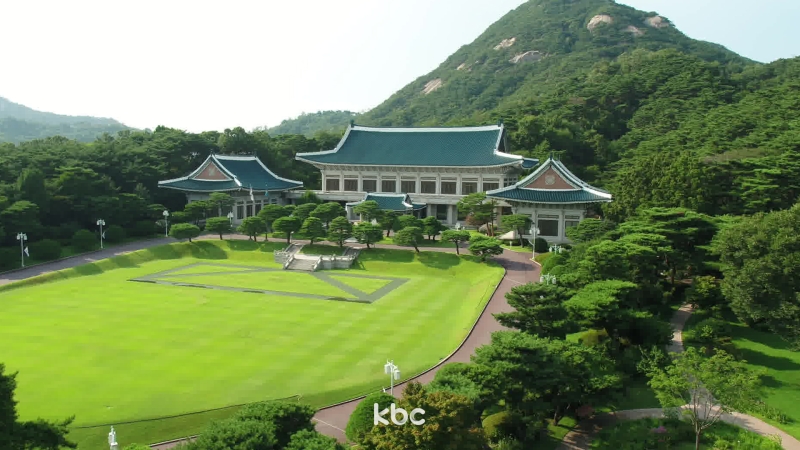
8. Blue House: 10 best place to visit in Seoul
The Blue House, also known as Cheong Wa Dae, is the official residence and executive office of the President of South Korea. Situated in Seoul, it holds significant historical, political, and cultural importance for the nation.
Key points about the Blue House:
- Historical Significance: The Blue House has a rich history that dates back to the Joseon Dynasty. It served as the royal residence for many years before being repurposed as the presidential residence following Korea’s independence.
- Architectural Beauty: The Blue House’s architecture blends traditional Korean design elements with modern influences. Its distinct blue-tiled roofs and white walls are symbolic of Korean architectural style and cultural heritage.
- Presidential Residence: As the official residence of the President of South Korea, the Blue House serves as a central location for governmental affairs and activities. It houses the president’s offices, living quarters, and reception areas.
- Symbol of Power: The Blue House represents the power and authority of the South Korean presidency. It is a symbol of the nation’s democratic governance and serves as a backdrop for important political announcements, state receptions, and diplomatic events.
- Cultural Heritage: The Blue House complex encompasses more than just the main residence. It includes beautiful gardens, pavilions, and historical buildings that reflect Korea’s cultural traditions. These areas are open to the public and showcase the country’s natural beauty and architectural treasures.
- Visitor Center: The Blue House offers a visitor center where tourists can learn about South Korea’s political history, explore exhibits on the president’s role, and gain insights into the country’s governance. Guided tours allow visitors to appreciate the significance of the Blue House and its role in shaping the nation.
- Symbol of Unity: The Blue House represents national unity and the collective aspirations of the Korean people. It serves as a reminder of the nation’s progress, resilience, and commitment to democracy.
The Blue House stands as an iconic landmark in South Korea, embodying the nation’s political leadership, historical legacy, and cultural heritage. Its architectural beauty, historical significance, and role as the presidential residence make it an important symbol of South Korea’s identity and democratic values.
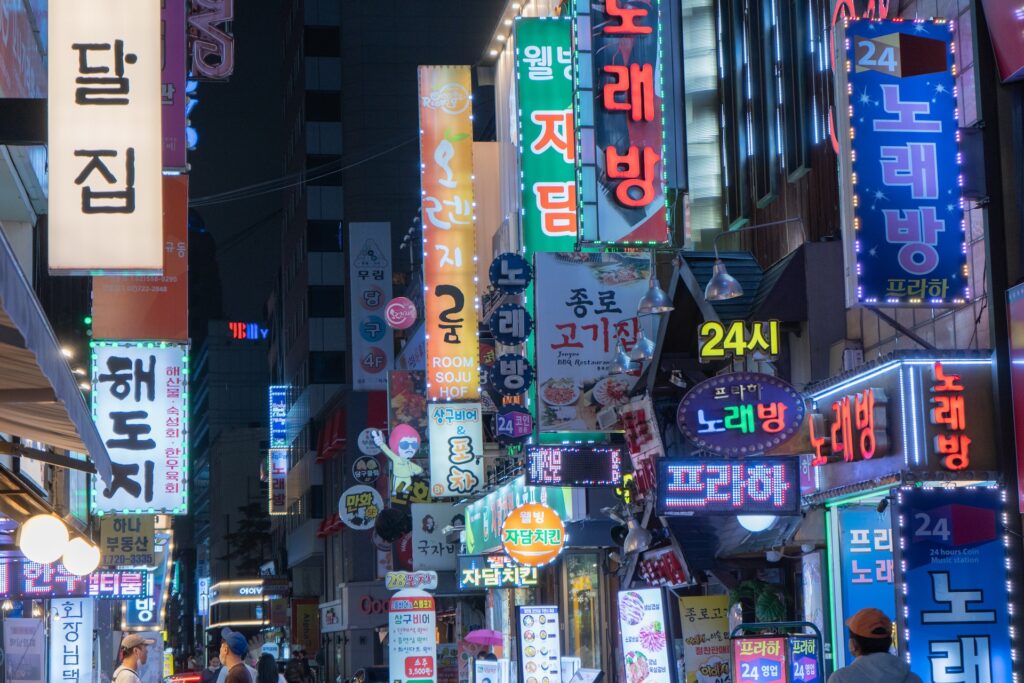
9. Myeongdong: 10 best place to visit in Seoul
Myeongdong is a vibrant and bustling neighborhood located in the heart of Seoul, South Korea. Renowned as a shopping and entertainment district, it attracts both locals and tourists with its lively atmosphere, diverse retail options, and culinary delights.
Key points about Myeongdong:
- Shopping Paradise: Myeongdong is a shopaholic’s dream come true, offering a wide range of shopping opportunities. From international fashion brands to local boutiques, cosmetics stores, and street stalls, visitors can find everything from trendy clothing and accessories to skincare products and cosmetics.
- Street Food Haven: Myeongdong is famous for its mouthwatering street food. The streets are lined with food stalls selling a variety of delectable snacks and treats, such as Korean-style pancakes (hotteok), grilled skewers (odeng), spicy rice cakes (tteokbokki), and more. Exploring the culinary delights of Myeongdong is a must for food enthusiasts.
- Fashion and Beauty Hub: As a trendsetting district, Myeongdong reflects the latest fashion and beauty trends in South Korea. Many local and international fashion brands have flagship stores here, offering a glimpse into Korean fashion culture. Additionally, Myeongdong is home to numerous beauty stores, where visitors can explore and purchase popular Korean skincare and cosmetics products.
- Street Performances: Myeongdong comes alive with vibrant street performances. Talented buskers entertain crowds with music, dance, and other artistic expressions, creating an energetic and festive ambiance. Visitors can enjoy these performances while exploring the district’s vibrant streets.
- Nightlife and Entertainment: Myeongdong offers a lively nightlife scene, with numerous bars, clubs, and entertainment venues. Visitors can enjoy live music performances, karaoke, and other nightlife activities, making it an exciting destination for those seeking evening entertainment.
- Cultural Landmarks: Amidst the modern shopping and entertainment scene, Myeongdong is also home to significant cultural landmarks. The Myeongdong Cathedral, a beautiful Gothic-style church, stands as a historic and architectural gem. It provides a peaceful contrast to the bustling streets and serves as a spiritual sanctuary for many.
- Accessibility: Myeongdong’s central location and excellent transportation connections make it easily accessible to visitors. It is well-served by public transportation, including subway lines and buses, making it convenient to reach from various parts of Seoul.
Myeongdong’s dynamic blend of shopping, food, entertainment, and cultural experiences makes it a must-visit destination in Seoul. Whether you’re in search of the latest fashion trends, delectable street food, or a vibrant atmosphere, Myeongdong offers an exciting and unforgettable experience for visitors of all ages.
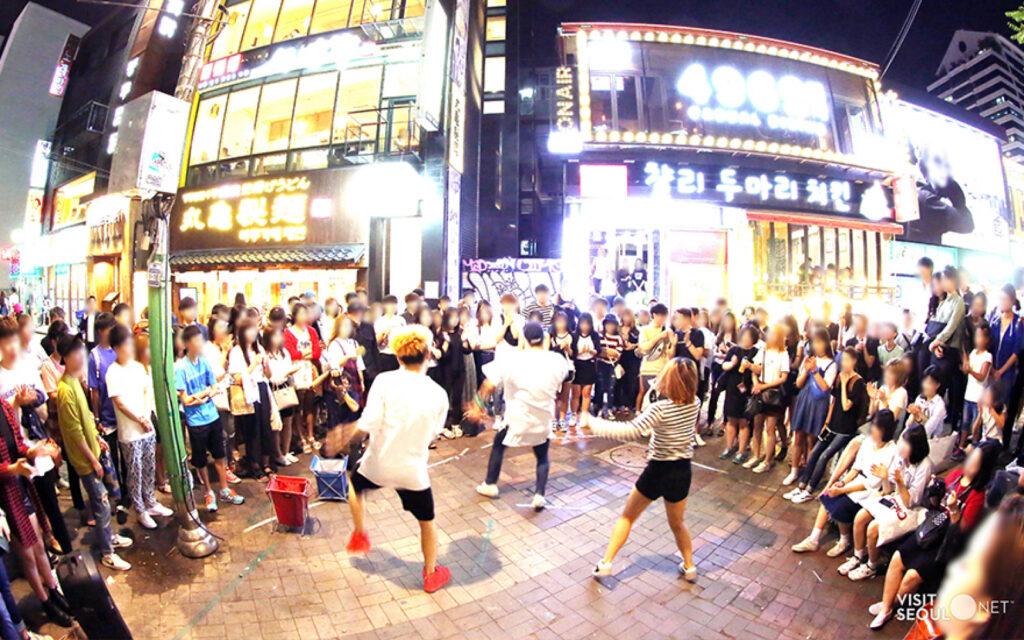
10. Hongdae: 10 best place to visit in Seoul
Hongdae, short for Hongik University area, is a vibrant and artistic neighborhood located in the Mapo District of Seoul, South Korea. Known for its youthful energy, creativity, and alternative culture, Hongdae has become a popular destination for locals and tourists alike.
Key points about Hongdae:
- Artistic Hub: Hongdae is renowned for its thriving art scene and creativity. The neighborhood is home to Hongik University, one of the leading art schools in South Korea. Its influence can be seen in the numerous art galleries, indie theaters, and street performances that fill the area.
- Street Performances and Buskers: Hongdae is famous for its lively street performances and talented buskers. Musicians, dancers, and other artists showcase their skills and entertain passersby. The streets come alive with music, creating an energetic and vibrant atmosphere.
- Indie Music and Clubs: Hongdae is a hub for indie music and live performances. It boasts a wide range of live music venues, clubs, and bars that cater to different music tastes. Visitors can enjoy performances by local bands, discover new talent, and experience the dynamic music scene.
- Unique Shopping Experience: Hongdae offers a diverse shopping experience with a focus on independent and boutique stores. It is the perfect place to find unique fashion items, handmade crafts, vintage clothing, and quirky accessories. Visitors can explore the countless shops and market stalls that line the streets.
- Cosmopolitan Dining: Hongdae offers a wide range of dining options, including international cuisine, trendy cafes, and traditional Korean eateries. From stylish restaurants to street food stalls, visitors can indulge in a culinary adventure and savor diverse flavors.
- Fashion and Street Style: Hongdae is known for its fashion-forward and trendsetting street style. The neighborhood’s young and fashionable crowd showcases their unique and individualistic fashion sense. It is a great place for fashion enthusiasts to observe and get inspired by the latest trends.
- Nightlife and Entertainment: Hongdae comes alive after dark with its vibrant nightlife. The neighborhood offers a variety of bars, clubs, and karaoke rooms that cater to different preferences. It is a popular destination for those seeking an exciting and lively evening experience.
- Hongdae Park and Street Art: Hongdae Park, also known as Picasso’s Street, is a gathering spot for artists and creative individuals. The park is adorned with colorful murals and street art, providing a picturesque backdrop for visitors and artists alike.
Hongdae’s dynamic atmosphere, artistic spirit, and youthful vibe make it an iconic and must-visit neighborhood in Seoul. Whether you’re interested in art, music, fashion, or simply immersing yourself in the energetic ambiance, Hongdae offers a memorable and culturally rich experience for all.

